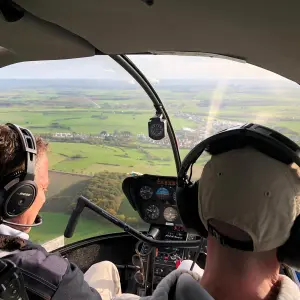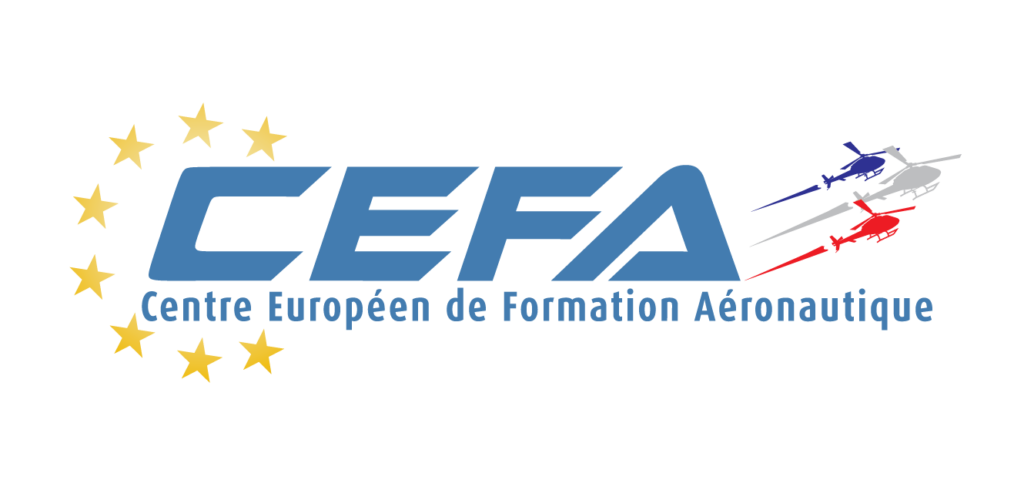
How do you finance your training? Our advice and tips
In an ever-changing world of work, investing in training is essential if you are to remain competent and progress in your career. However, the major challenge often lies in financing this training. In this article, we look at strategies for overcoming financial barriers and making your professional development plans a reality.

Exploit financing opportunities
Many companies recognise the importance of continuing education and offer dedicated funding programmes for their employees. Ask your employer about the funding solutions available, ranging from repayable loans to grants and instalment agreements.
Private funding is a valuable source of support for your communications training project. As a communications, marketing and events manager on a sandwich course at Fly & Fun, you can explore several ways of making the most of these funding opportunities:
- Internal communication: Initiate proactive communication with your employer. Make clear your intention to pursue communications training, emphasising how this will benefit not only your professional development but also the company. Present the training as a mutual investment, strengthening your skills for the benefit of the organisation.
- Internal training programmes: Find out about the internal training programmes set up by your company. Some organisations offer professional development opportunities by partially or fully funding their employees’ training. Identify existing initiatives and talk to your human resources managers to find out more about the possibilities available.
- Repayable loans: Some employers offer repayable loan options to finance their employees’ training. These loans can be repaid gradually, offering a flexible solution for financing your course while limiting the immediate financial impact. Make sure you understand the repayment terms and conditions before opting for this option.
- External grants and partnerships: Explore the possibilities of external grants and partnerships. Some companies have privileged relationships with external organisations that support the skills development of their employees. Investigate these opportunities and consider strategic collaborations that could benefit your training project.
- Phased repayment agreements: Negotiate phased repayment agreements with your employer. If full funding is not possible, propose a progressive repayment plan over a defined period. This can make the financial burden more manageable for the company while allowing you to complete your training.
- Return on investment (ROI) evaluation: Present an analysis of the potential return on investment of your training. Highlight how the skills acquired will directly benefit your current and future role within the company. By demonstrating the added value of the training, you increase the chances of obtaining financial support.
By exploiting these private funding opportunities strategically, you can ease the financial burden of your communications training while strengthening your professional link with your employer. Open communication and demonstrating the added value of your training will be major assets when seeking private financial support.
Chasing grants and subsidies
Explore the landscape of scholarships and grants offered by various organisations, associations or public institutions. A thorough search may reveal opportunities specific to your field of study or work, offering significant financial support.
Searching for scholarships and grants is a crucial step in financing your communications training. As Communications, Marketing and Events Manager at Fly & Fun, this approach can diversify your sources of funding. Here’s how to go about it:
Start by identifying scholarships and grants available in the field of communication. Check the websites of professional organisations, educational institutions and communication-related associations. Some government bodies and private companies also offer financial support for skills development.
Make sure that the scholarships you are looking for match your professional and academic profile. Some funding programmes target specific areas of communication, while others may be more general. Tailor your search to your needs and objectives.
Most scholarships require you to submit an application. Prepare a solid application highlighting your academic background, your work experience at Fly & Fun and your training project. Highlight your achievements, your career aspirations and how the proposed training will contribute to your growth.
Tap into your professional communications network. Take part in events, conferences and professional meetings. The contacts you make can be a valuable source of information about little-known funding opportunities. Don’t hesitate to ask your peers and mentors for recommendations and advice.
Before applying, make sure you meet all the eligibility criteria for each scholarship or grant. Requirements often vary in terms of age, level of study and other specific criteria. A well-targeted application increases your chances of success.
The availability of grants can change frequently. Create a routine of regularly monitoring funding opportunities. Subscribe to newsletters, follow the social networks of relevant organisations, and check dedicated websites regularly to keep abreast of new opportunities.
By actively exploring grants and scholarships, you can diversify your sources of funding and potentially reduce the cost of your communications training. Patience, perseverance and a strategic approach to your search are key to maximising your chances of success.
Focus on work-linked training and apprenticeships
As a work-linked student, you’ve already opted for an approach that combines study and work experience. Work-study or apprenticeship contracts can often include partial or total funding of your training, while offering you a salary to support yourself.
As a communications, marketing and events manager at Fly & Fun, your work-linked training status offers a significant opportunity to finance your training while gaining professional experience. Here’s how to maximise the benefits of work-linked training and apprenticeships to finance your communications training:
As a student on a work-linked training contract, your company will often fund part or all of your training. Evaluate the funding arrangements for your work-linked training contract carefully. Understand how tuition fees, textbooks and other costs associated with your training will be covered.
Make sure that the training you are considering is in line with your current and future professional duties at Fly & Fun. Aligning your training with your day-to-day work strengthens the relevance of your application for funding and reinforces your position as a committed employee.
Take advantage of Fly & Fun’s professional ecosystem to explore additional funding opportunities. Some companies offer in-house professional development programmes for their work-study students. Talk to your HR managers to find out what opportunities are available within the company.
As well as covering the cost of your training, your work-linked training contract also provides you with remuneration. Plan your budget wisely, taking this remuneration into account. If possible, save part of your salary to cover other training-related expenses, such as travel costs or teaching materials.
Get in touch with other work-study students at Fly & Fun. Share your experiences and exchange tips on managing work and training. You could discover additional funding opportunities or benefit from practical advice on how to reconcile your professional and academic roles effectively.
Show how your communications training can contribute to the company’s objectives and projects. If your training adds value to Fly & Fun, this will strengthen the case for funding your training.
Work-linked training and apprenticeships are strategic ways of financing your training while gaining practical professional experience. By taking advantage of this opportunity, you strengthen your professional position and build a solid bridge between academic theory and practical application.

Plan strategically and save intelligently
If no external funding options are available, consider creating a dedicated savings account for your training. Draw up a financial plan taking into account your current expenses and the anticipated costs of your training, to ensure a smooth transition to this new stage.
- Draw up a detailed budget: Start by drawing up a detailed budget, taking into account your current expenses, your work-linked training costs and the costs associated with your training. Identify areas where savings can be made and prioritise your expenditure.
- Regular savings: Dedicate part of your sandwich course salary to saving for your training. Set up a specific account where you can gradually accumulate the necessary funds. Draw up a realistic savings plan and stick to it regularly to achieve your financial goal.
- Looking for additional income: Explore opportunities for additional income, such as freelance assignments in the communications field, one-off collaborations or independent projects. This additional income can help finance part of your training while consolidating your professional experience.
- Savings on non-essential expenditure: Identify non-essential expenditure and look for ways to reduce it. This can include adjusting spending habits, looking for promotions or discounts, and avoiding impulse purchases. Every saving you make contributes to your savings fund.
- Use existing resources wisely: Explore existing resources, such as second-hand textbooks, online platforms offering free courses, or local libraries. Maximise the use of these resources to reduce the costs associated with training while maintaining the quality of learning.
- Long-term planning: Anticipate the future costs of your training throughout your course. Long-term planning allows you to spread expenses more evenly and adjust your savings strategy accordingly. Avoid financial stress by anticipating and planning meticulously.
- Regular assessment of your financial situation: Carry out regular assessments of your financial situation. Adapt your savings plan in line with changes in your income, external financing opportunities and changes in your expenditure. Flexibility and adaptability are crucial to maintaining an effective financial plan.
By adopting a methodical and strategic approach to financial planning, you can overcome the challenges of financing your communications training. Smart saving and prudent management of financial resources will ensure a smooth transition to your next academic stage.
Conclusion
Investing in your training is a powerful lever for shaping your professional future. By understanding and making effective use of the different funding options available, you can not only overcome financial obstacles, but also access professional development opportunities that will propel your career to new heights.
Would you like to discover the world of helicopter pilots? Then get in touch with us!
CEFA – Centre Européen de Formation Aéronautique
- Aérodrome de Reims-Prunay, 51360 Prunay
- [email protected]
- 07 49 94 35 32
Our office in Luxembourg
- 13-15, Rue de l'industrie L-8069 Bertrange Luxembourg
- [email protected]
- +352 2630761
Our training courses
Becoming a pilot in Europe and Canada
Become a pilot in Europe only
To become a pilot for personal pleasure
To convert your licence and fly in Europe






No comment yet, add your voice below!